Horseshoe Falls from below the High Bank
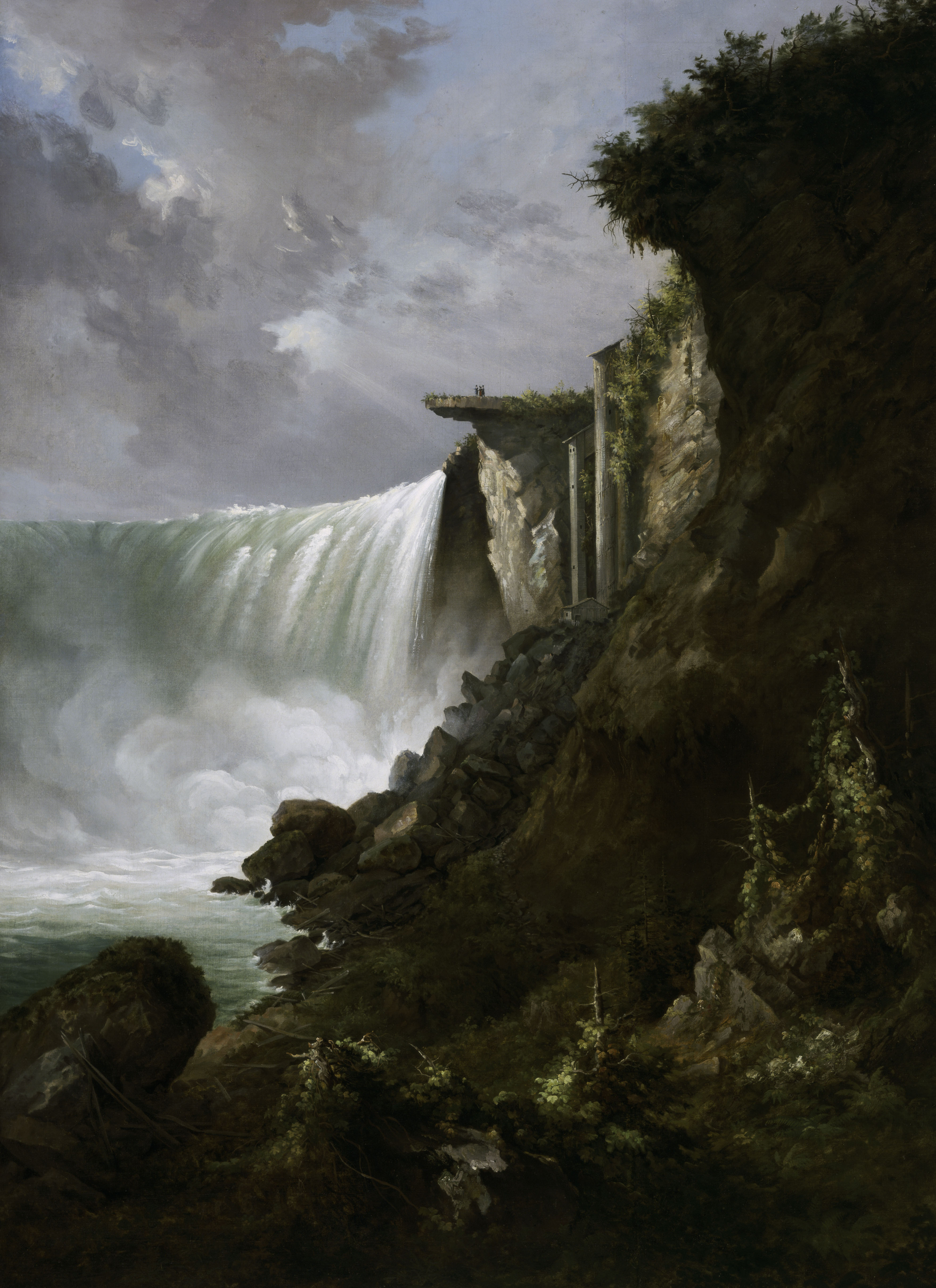
Have you ever experienced the sublime?

Have you ever experienced the sublime?

Have you ever experienced the sublime?
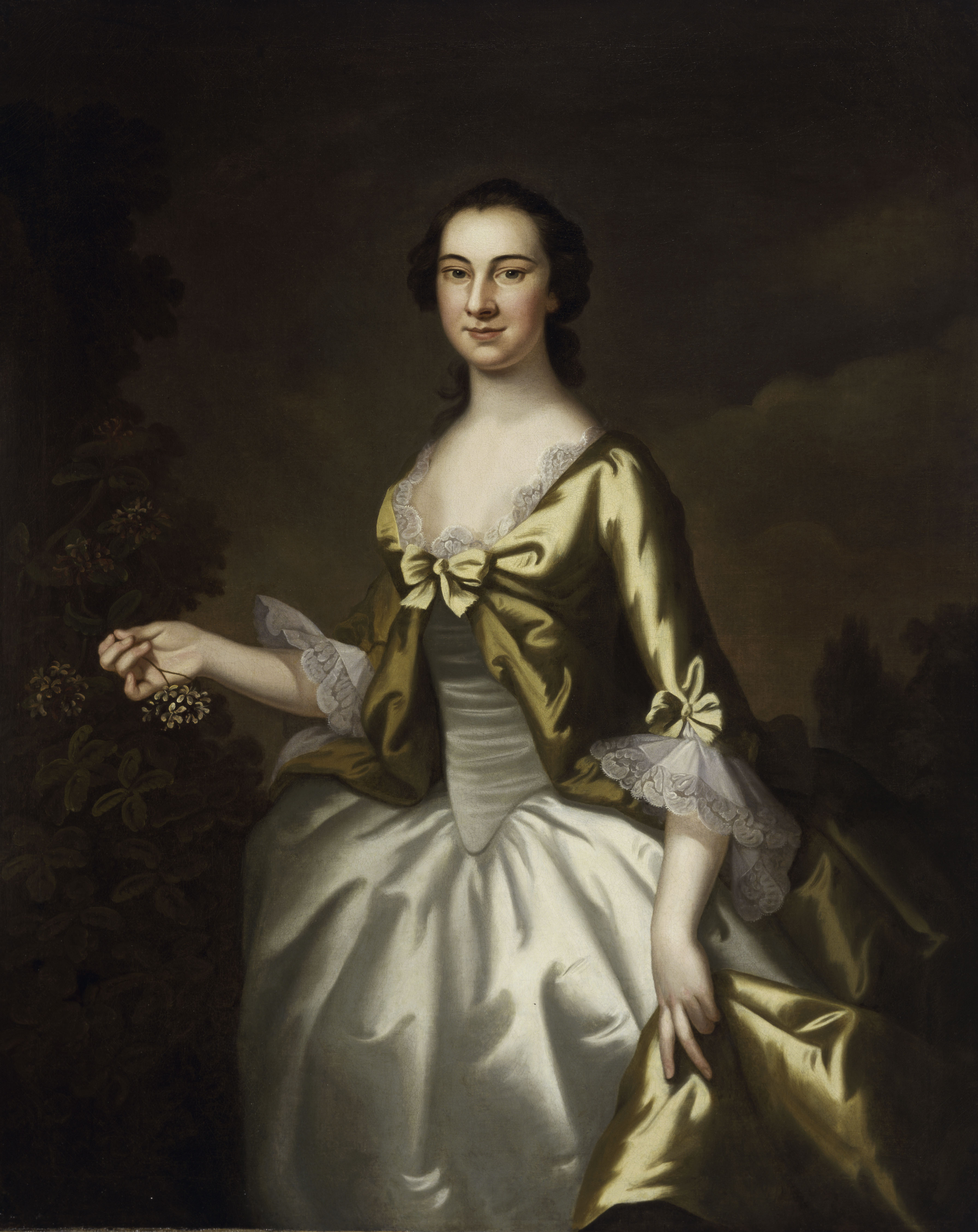
What parts of an identity do portraits capture?
Like many artists working in America, Wollaston used English aristocratic portraits as source material. He was able to draw from his firsthand experiences in London and from the English mezzotint engravings that were brought to the colonies. His portraits are characterized by relaxed poses, natural settings, shimmering fabrics, and distinctive almond-shaped eyes. This portrait depicts Elizabeth Plumstead, whose father and grandfather both served multiple terms as mayor of Philadelphia.

What parts of an identity do portraits capture?
Like many artists working in America, Wollaston used English aristocratic portraits as source material. He was able to draw from his firsthand experiences in London and from the English mezzotint engravings that were brought to the colonies. His portraits are characterized by relaxed poses, natural settings, shimmering fabrics, and distinctive almond-shaped eyes. This portrait depicts Elizabeth Plumstead, whose father and grandfather both served multiple terms as mayor of Philadelphia.
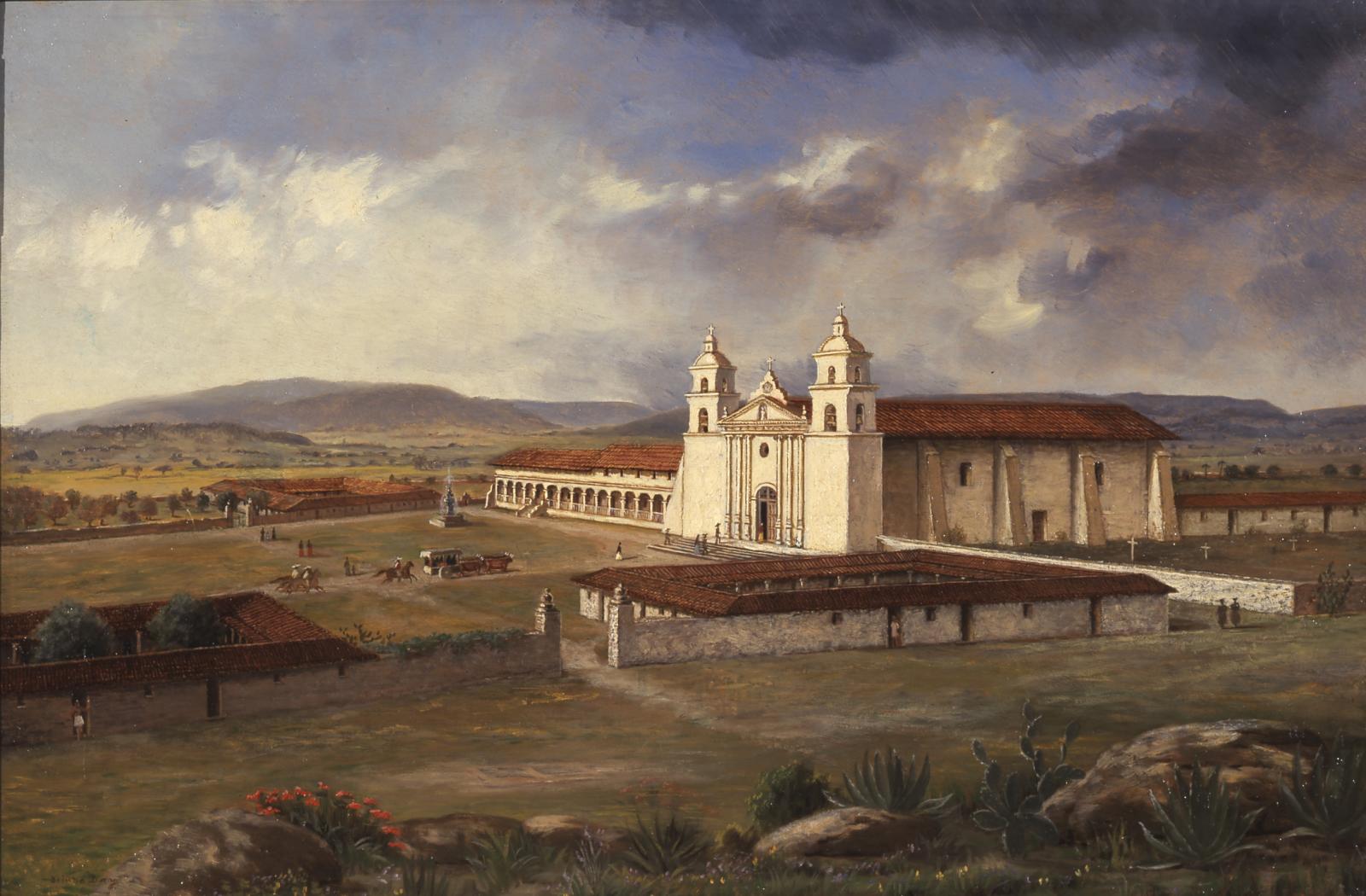
Do artists document reality?
Mission Santa Barbara was founded in 1786. It was built by the Chumash people, who were forced to aid in its construction and convert to Christianity. Before the arrival of the missionaries, the Chumash had lived in the area for thousands of years, spread across 40 neighboring villages. With their way of life destroyed by the introduction of the mission system, the Chumash came to rely on the mission for protection, food, and shelter.

Do artists document reality?
Mission Santa Barbara was founded in 1786. It was built by the Chumash people, who were forced to aid in its construction and convert to Christianity. Before the arrival of the missionaries, the Chumash had lived in the area for thousands of years, spread across 40 neighboring villages. With their way of life destroyed by the introduction of the mission system, the Chumash came to rely on the mission for protection, food, and shelter.
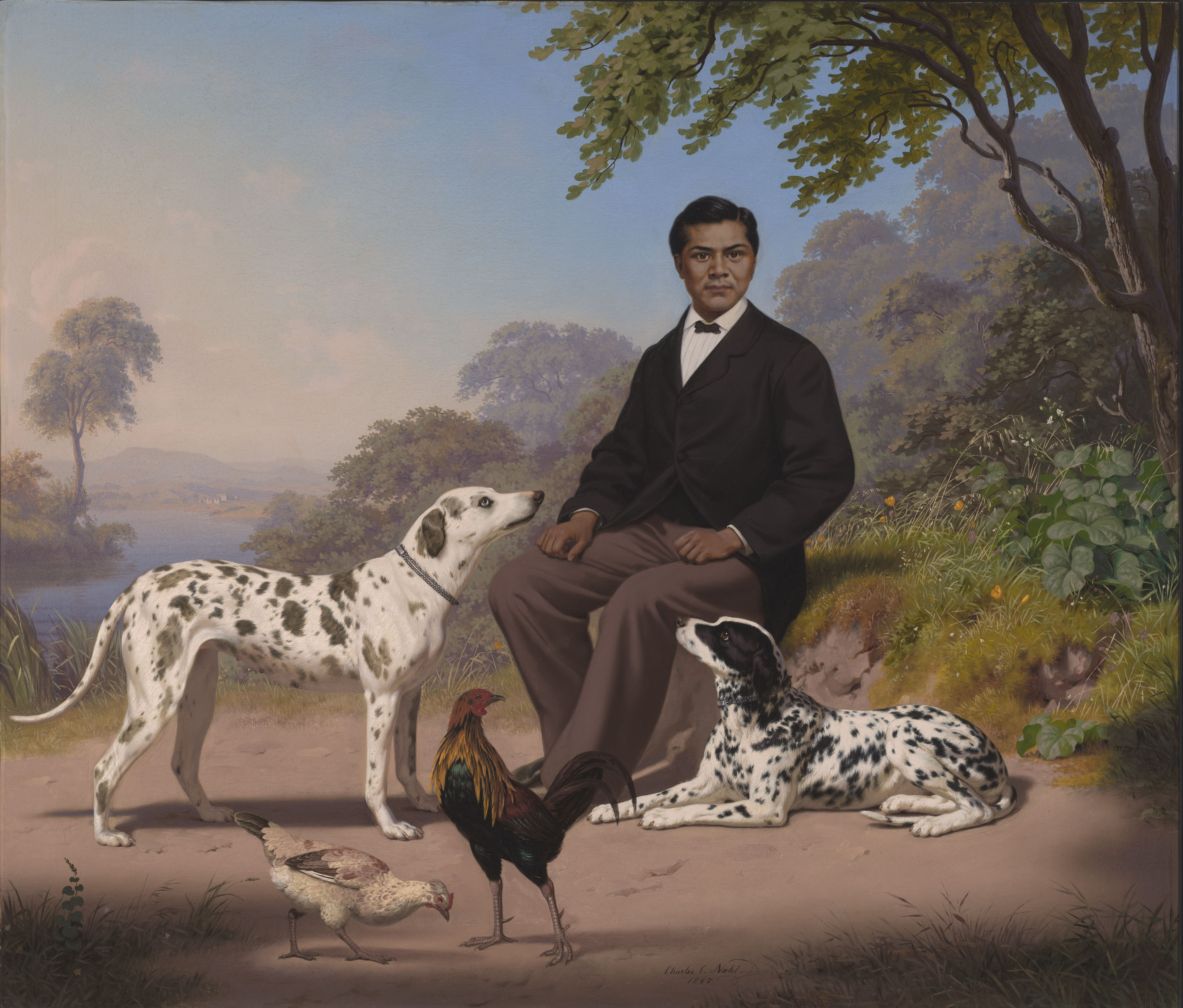
What does assimilation look like?
Nahl’s portrait presents a rare “fine art” depiction of culturally assimilated Native American man, a subject usually confined to ephemeral propaganda such as before-and-after photographs produced by social reformers. Dressed in a jacket and tie and shown outdoors with chickens and dogs, the sitter is awkwardly posed between two cultures and two identities. Today, this painting provides a counterpoint to the stereotypical images of Native Americans typically found in American museums.

What does assimilation look like?
Nahl’s portrait presents a rare “fine art” depiction of culturally assimilated Native American man, a subject usually confined to ephemeral propaganda such as before-and-after photographs produced by social reformers. Dressed in a jacket and tie and shown outdoors with chickens and dogs, the sitter is awkwardly posed between two cultures and two identities. Today, this painting provides a counterpoint to the stereotypical images of Native Americans typically found in American museums.
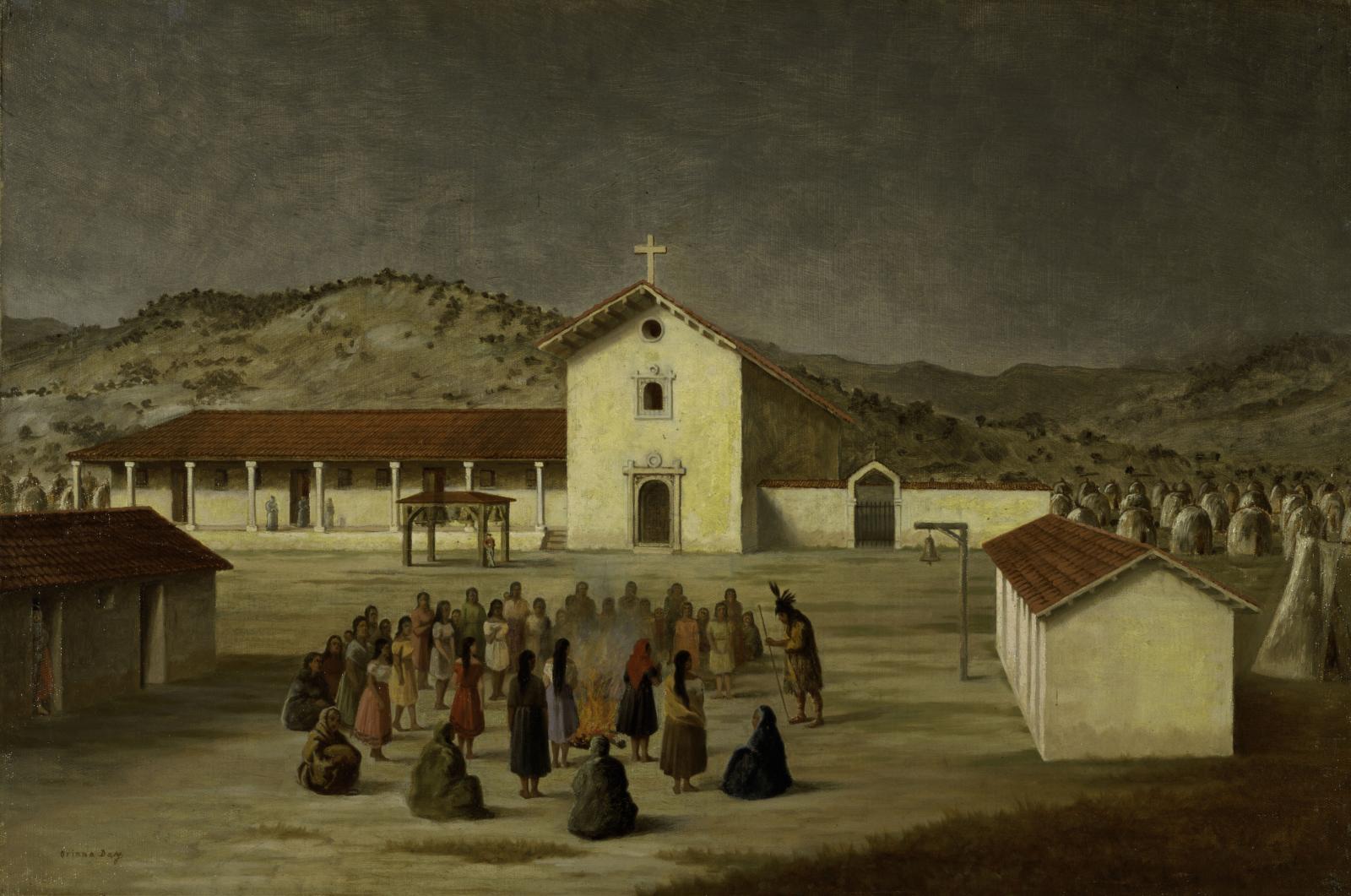
What would you change if you could travel back in time?
This painting shows a Native American ceremony in the courtyard of the Mission San Francisco Solano de Sonoma, in present-day Sonoma, California. The mission operated for only 11 years before it was secularized; the northwestern-most post, it was the last mission founded in California and had been established without church approval. The local people who were forced to convert to Christianity were primarily members of the Coast Miwok, Pomo, Suisunes, Wappo, and Patwin tribes.

What would you change if you could travel back in time?
This painting shows a Native American ceremony in the courtyard of the Mission San Francisco Solano de Sonoma, in present-day Sonoma, California. The mission operated for only 11 years before it was secularized; the northwestern-most post, it was the last mission founded in California and had been established without church approval. The local people who were forced to convert to Christianity were primarily members of the Coast Miwok, Pomo, Suisunes, Wappo, and Patwin tribes.